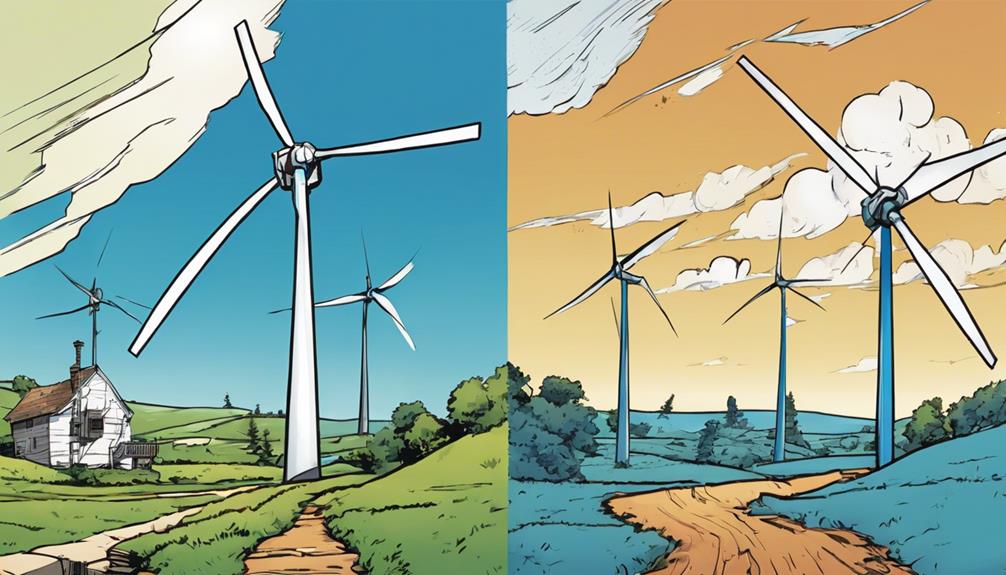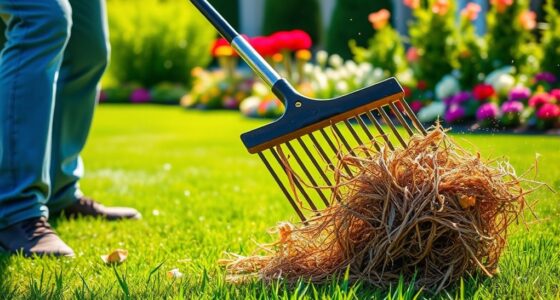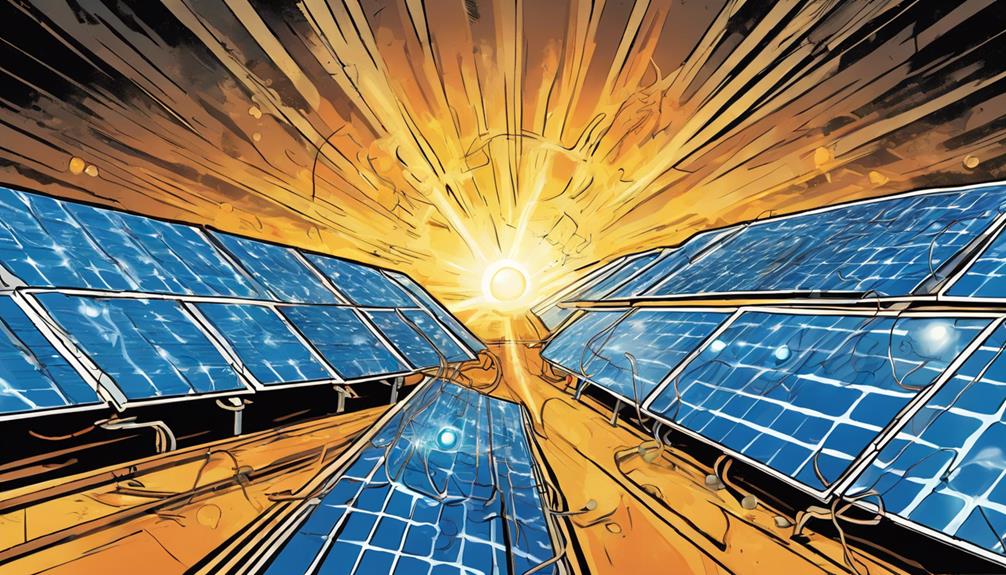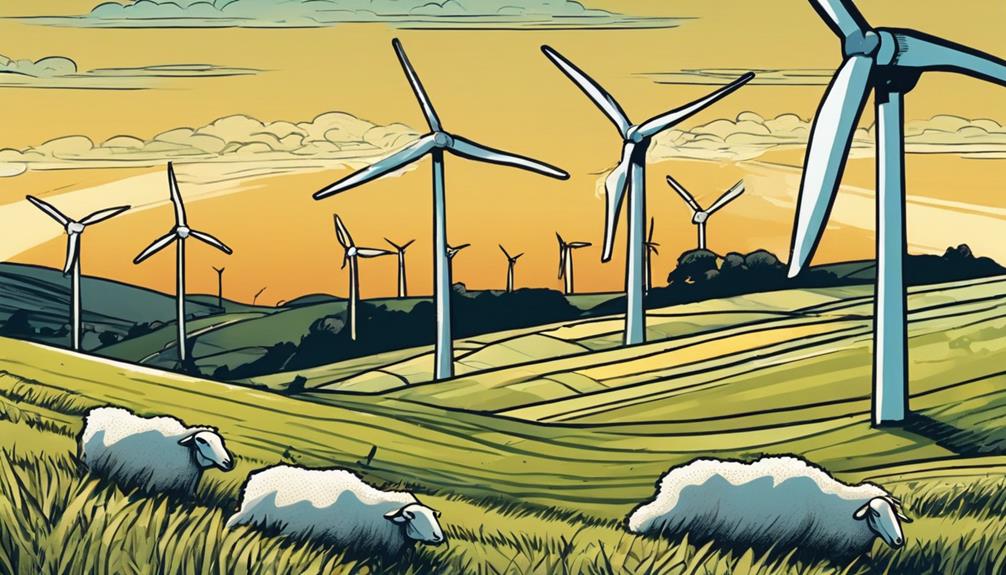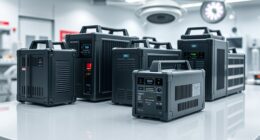Wind power has come a long way since its ancient roots in Persia, Greece, and Rome. Today, turbines and windmills differ substantially in design, functionality, and application. Turbines are designed for electricity generation, while windmills serve smaller-scale operations. Turbines have larger blades on tall towers, whereas windmills have blades on rotating shafts. Cost factors, including installation and maintenance, vary significantly between the two. Blade configuration also plays an essential role in performance and maintenance. As wind power continues to evolve, understanding these differences is crucial to harnessing its full potential.
Key Takeaways
- Wind turbines are designed for electricity generation, whereas windmills are used for smaller-scale operations like grinding and pumping.
- Turbines have larger blades on taller towers, producing more energy, whereas windmills have shorter blades on rotating shafts.
- Two-blade turbines offer cost-efficiency, while three-blade turbines balance efficiency and costs, and multi-blade turbines provide increased production capacity.
- Turbines and windmills differ significantly in noise levels, costs, and maintenance requirements, with turbines requiring more materials and labor.
- The choice between turbines and windmills depends on location-specific factors, such as wind speeds, with three-blade turbines preferred in high-wind areas.
Ancient Roots of Wind Energy

As ancient civilizations harnessed the power of wind to sail their ships and grind their grain, they unwittingly laid the groundwork for a sustainable energy source that would evolve over centuries.
The earliest recorded use of wind energy dates back to ancient Persia, where windmills were used to pump water and grind grain around 500-900 AD.
Similarly, ancient Greeks and Romans utilized wind power for sailing and other purposes.
These early innovations marked the beginning of a long journey towards harnessing wind energy, paving the way for modern wind turbines and windmills that generate electricity today.
Turbine Vs. Windmill Differences
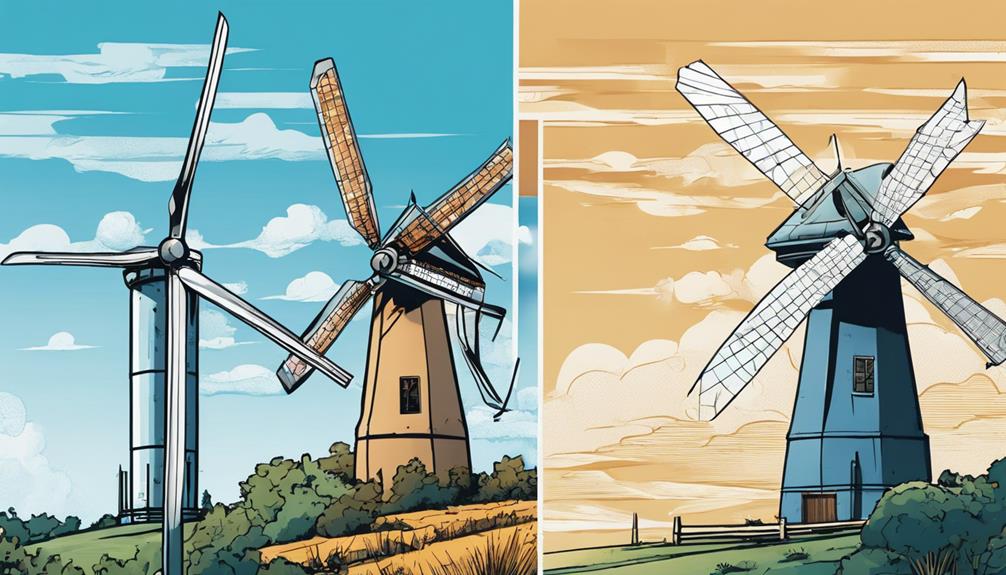
Fast-forwarding to modern times, the distinction between wind turbines and windmills has become increasingly important, with each serving unique purposes in harnessing wind energy.
Wind turbines are designed for electricity generation, featuring large rotating blades on tall towers. They're high-tech, mechanized, and produce larger amounts of electricity.
On the other hand, windmills have blades on a rotating shaft for driving machinery, making them suitable for smaller-scale operations like agriculture. They're low-tech, non-mechanized, and have lower installation costs and simpler maintenance needs.
The noise levels, installation costs, and maintenance requirements differ substantially between wind turbines and windmills, making it essential to understand their differences for effective wind energy implementation.
Cost Factors in Implementation
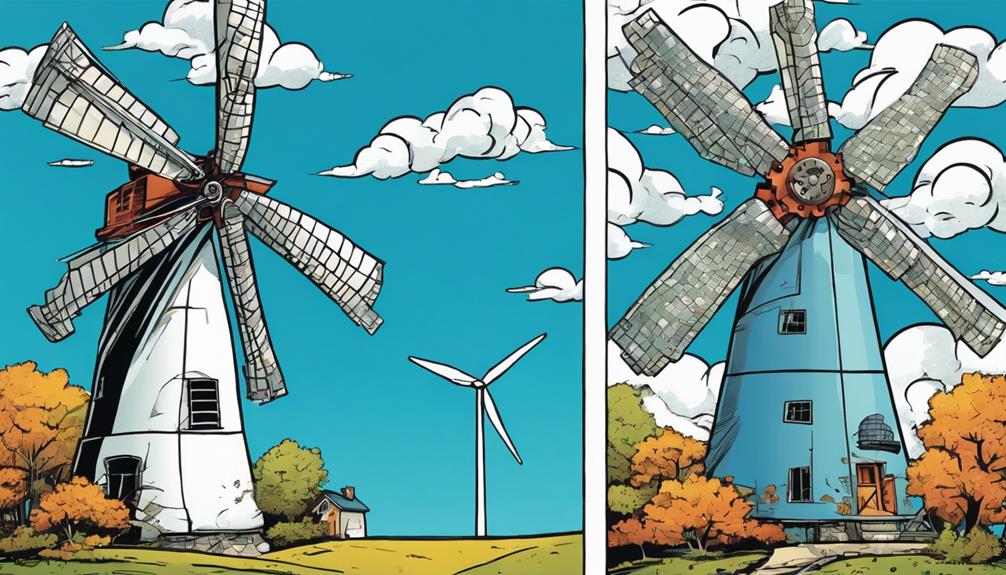
Significant cost differences between wind turbines and windmills emerge during implementation, with installation costs, maintenance requirements, and location-specific factors playing pivotal roles in determining the feasibility of wind energy projects.
Wind turbines generally have higher installation costs due to more materials, labor, and permits required. In contrast, windmills have lower installation costs and simpler maintenance needs. The cost of maintaining wind turbines is also higher compared to windmills.
Location requirements and environmental factors, such as wind speed and direction, also impact the cost-effectiveness of wind energy systems. Understanding these cost factors is essential for investors and developers to make informed decisions when choosing between wind turbines and windmills for their projects.
Blade Configuration Matters
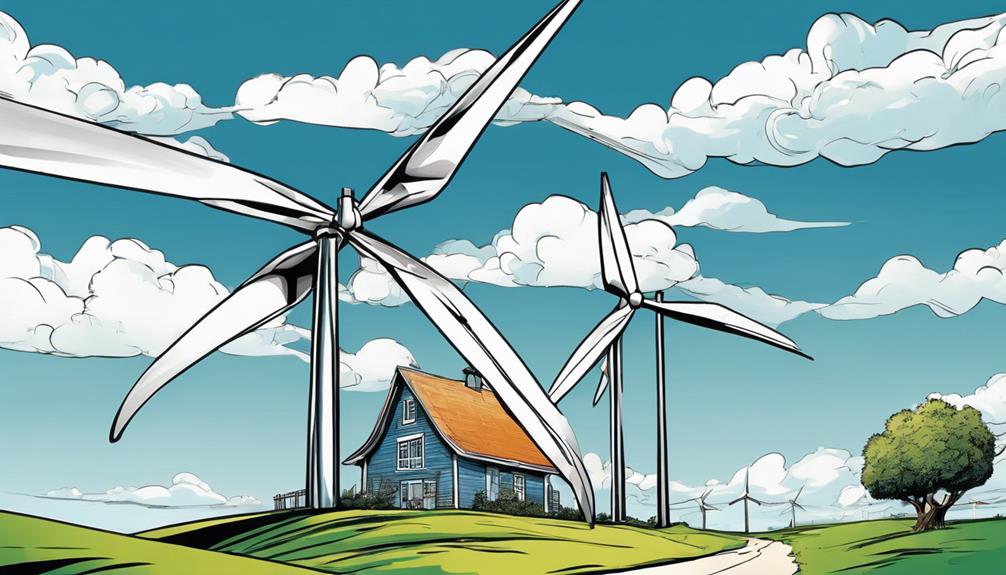
Wind turbine design, particularly the number and configuration of blades, has a significant impact on energy production, noise levels, and overall efficiency. The choice of blade configuration is essential, as it affects the turbine's performance, maintenance requirements, and cost-effectiveness.
Here are three key aspects of blade configuration:
- Two-blade turbines: Offer cost-efficiency and reduced noise pollution, but are less effective in high winds.
- Three-blade turbines: Balance efficiency, noise pollution, and costs effectively, making them a popular choice.
- Multi-blade turbines: Provide increased production capacity and energy efficiency, but come with higher initial costs.
Understanding the advantages and disadvantages of each blade configuration is crucial for best wind energy production.
Performance in High Winds

High winds pose a unique challenge for wind turbines, as they must be designed to harness the increased energy while withstanding the added stress on their components. The performance of wind turbines in high winds is essential, as it directly impacts their energy production and lifespan.
Three-blade turbines are often preferred in high-wind areas, as they provide a stable and balanced performance. In contrast, two-blade turbines may struggle to maintain efficiency in strong winds, leading to reduced energy output. Multi-blade turbines, on the other hand, excel in high winds, generating more energy and providing increased stability.
The choice of blade configuration is vital in high-wind environments, where turbines must be designed to thrive under intense conditions.
Energy Production Advantages
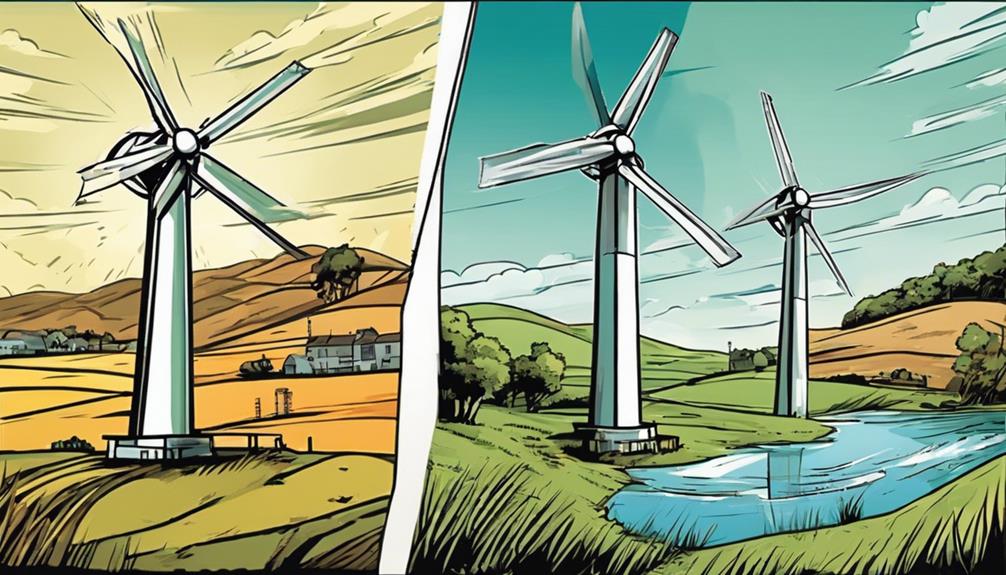
Efficient blade arrangements can significantly enhance electricity generation, with three-blade turbines typically producing up to 50% more power than their two-blade counterparts. This increase in energy production is essential for meeting the increasing global demand for renewable energy.
Here are key advantages of different blade arrangements:
- Three-blade turbines: Best performance, balancing efficiency and noise pollution
- Four-blade turbines: Increased energy production, stability in high winds, and lower maintenance costs
- Five-blade turbines: Enhanced torque, resistance against strong gusts, and improved energy production
Location and Environmental Impact
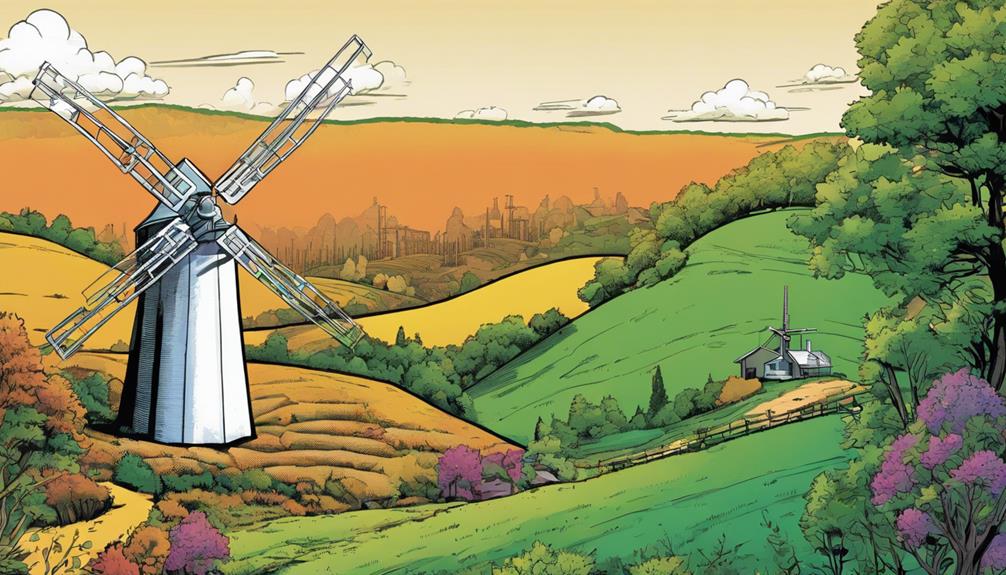
Careful site selection and environmental assessments are necessary to minimize the ecological footprint of wind energy installations, ensuring that the benefits of clean power generation aren't overshadowed by adverse environmental consequences.
Wind turbines, typically installed on tall towers, are more suitable for open spaces like plains or coastlines, where wind speeds are higher and more consistent. In contrast, windmills, with their shorter profiles, can be installed in closer proximity to agricultural areas or rural communities.
Environmental impact considerations, such as noise pollution, visual disturbance, and wildlife habitats, vary between turbines and windmills. Strategic location planning helps mitigate these effects, maximizing the efficiency and sustainability of wind power generation.
Frequently Asked Questions
Can Individual Homeowners Install Wind Turbines for Personal Energy Needs?
Yes, individual homeowners can install wind turbines for personal energy needs, but they require sufficient space, suitable wind speeds, and compliance with local regulations and zoning laws to guarantee efficient energy generation.
How Do Wind Turbines Withstand Extreme Weather Conditions Like Hurricanes?
Wind turbines are designed to withstand extreme weather conditions like hurricanes by using robust materials, aerodynamic designs, and advanced control systems that adjust blade pitch and yaw to reduce stress and minimize damage.
Are There Any Noise Reduction Technologies for Wind Turbines?
Silent blades sweep the skies as sophisticated sound suppression systems drastically slash squeaky sounds. Advanced aerodynamic designs and clever blade configurations ingeniously curb clatter, ensuring a quieter, more pleasant proximity to wind turbines.
Can Wind Energy Be Stored for Later Use During Power Outages?
They can store wind energy for later use during power outages through advanced technologies like batteries, pumped hydro storage, and compressed air energy storage, ensuring a reliable supply of electricity when needed.
Are There Any Government Incentives for Wind Energy Implementations?
Like a gentle breeze that sparks a wildfire, government incentives fan the flames of wind energy adoption. Yes, many governments offer tax credits, grants, and rebates to encourage wind energy implementations, driving growth and sustainability.
Conclusion
As the wind power showdown comes to a close, it's clear that turbines have emerged as the champion of modern energy production.
Like a finely-tuned orchestra, turbines harmonize cutting-edge technology with environmental sustainability, producing a symphony of clean energy.
In contrast, windmills, while charmingly nostalgic, struggle to keep pace with the demands of the 21st century.
As the world continues to turn towards renewable energy, turbines stand poised to lead the charge.
